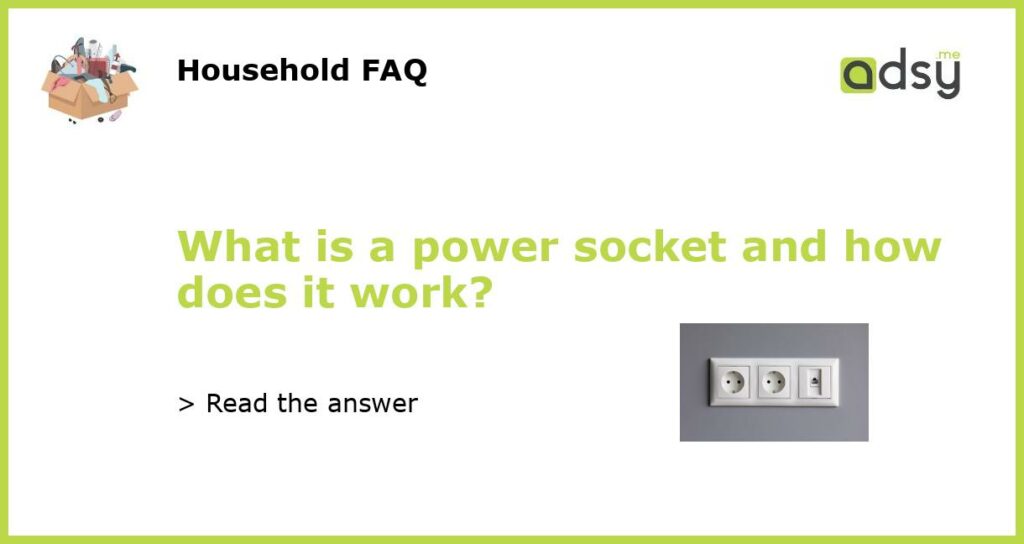What is a Power Socket?
A power socket, also known as an electrical outlet or a wall socket, is a device that allows electrical devices to be connected to the power supply. It is a junction point where the electrical wiring of a building is connected to the external power source, usually the mains electricity grid.
How Does a Power Socket Work?
A power socket consists of a receptacle and a plug. The receptacle is the female part of the socket where the male plug is inserted. The plug, on the other hand, is the male part that contains metal prongs or pins that make contact with the receptacle, allowing electricity to flow. When a plug is inserted into a socket, it completes an electrical circuit, allowing the flow of electrical current from the power source to the device.
The Components of a Power Socket
A power socket typically has three main components:
- Receptacle: The receptacle is made up of metal contacts that connect with the plug’s prongs or pins. It is usually mounted onto a wall or a plate and is often made of fire-resistant material.
- Contacts: The contacts are the conducting parts within the receptacle that make contact with the plug. These contacts are typically made of brass or other conductive materials to ensure good electrical conductivity.
- Wiring: The wiring connects the receptacle to the electrical system of the building. It consists of copper or aluminum conductors that carry the electrical current from the power source to the receptacle.
Types of Power Sockets
There are various types of power sockets used around the world. The most common types include:
- Type A/B: These are used in North and Central America, as well as parts of South America and the Caribbean. Type A sockets have two flat pins, while Type B sockets have two flat pins and a grounding pin.
- Type C: This type is commonly used in Europe, South America, Africa, Asia, and the Middle East. It has two round pins and is compatible with Type E, Type F, and Type K plugs.
- Type G: This type is commonly used in the United Kingdom, Ireland, and other parts of the world. It has three rectangular pins in a triangular pattern.
- Type I: This type is commonly used in Australia, New Zealand, China, and Argentina. It has two flat pins in a V-shape, with an additional grounding pin.
Electrical Safety and Power Sockets
When using power sockets, it is important to prioritize electrical safety. Here are some safety tips:
- Use Properly Rated Plugs and Cords: Ensure that the plugs and cords you use are rated for the appropriate voltage and current. Using inadequate or damaged plugs and cords can lead to electrical hazards.
- Avoid Overloading Sockets: Do not plug too many devices into a single socket or use multiple extension cords in a daisy-chain fashion. Overloading sockets can cause overheating and increase the risk of electrical fires.
- Keep Sockets Dry: Avoid using power sockets in wet or damp areas, as this can increase the risk of electrical shock. Use sockets with built-in moisture protection in areas where water may be present, such as bathrooms and kitchens.
- Inspect Sockets Regularly: Check power sockets for any signs of damage or wear, such as loose connections, exposed wires, or scorch marks. If you notice any issues, have them repaired or replaced by a qualified electrician.
- Use Surge Protectors: Consider using surge protectors to protect your devices from power surges and voltage spikes. Surge protectors help prevent damage to sensitive electronic equipment.






